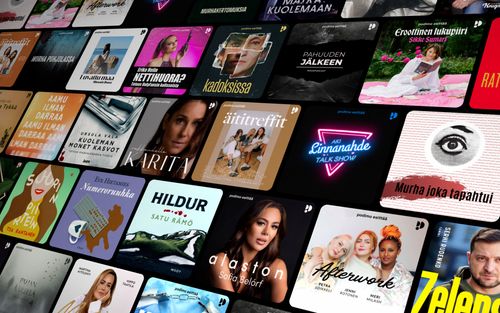Amy Carney talks about low vision, sticky elements, and overlays
A11y Rules Soundbites - Podcast tekijän mukaan Nicolas Steenhout

Kategoriat:
Amy tells us that sticky elements are a problem for her as they can hide content. And overlays don't help. Transcript Nic Hi. I'm Nic Steenhout. And you're listening to the accessibility rules sound bytes, a series of short podcasts where disabled people explain their impairments and what barrier they encounter on the web. Today, I'm talking with Amy Carney. Hi, Amy, how are you? Amy Hi, I'm good. Nic Good. So glad that we get to catch up. We interact on Slack and on Twitter quite a bit. But face to face audio discussion is rare. Let me jump right in and ask you what's your disability or your impairment? Amy Well, I have a visual impairment. I was born with cataracts. And so I had my lenses removed when I was just a baby. And they have a technical term for that. Aphakic. So I have no lenses in my eyes. So these glasses I wear are my lenses. Nic All right. What impact does that have on your use of the web? What? What is your current pet peeve, biggest barrier you're experiencing? Amy Well, the biggest pet peeve would be anytime that something is blocked or text is cut off. So anything sticky on the screen, like sticky headers, sticky footers, sometimes even a little help icon on the side that stay in place, it all blocks my view because I have to enlarge my type a little bit sometimes when I'm zooming in through the browser, and it all bumps together really fast, especially when I have smaller screens, like phone or small laptop. Nic So sticky elements that basically reduce the viewport, because you have to enlarge the content within the viewport make access to the information really difficult. Amy It can yes, most definitely. Any kind of boxes that have to stay in place and don't allow expansion, any kind of things that are just fixed, and have to stay the way they look. Nic Why do you think there's such a trend for these sticky elements, though? Amy I think I've heard for headers, it's usually, so people can get back up to the top access the menu right away. And then I think it's common to have like chatbots and things. So you have buttons on the side. Some of the trend is having the accessibility overlay, which has a button that opens up and stays in place. And that can really block content for me as well. So yeah, anything that they they think that they want this at your fingertips quite literally, for the phones even. And it's it just blocks, you know, I'd rather just be able to scroll to what I need. Instead of having it stuck right in the way of the text that I want to read. Nic You opened the door for a follow up question. You mentioned these accessibility overlay widgets. From the perspective of a user with low vision, do you find that widgets useful at all? Amy I don't. And I know there's high contrast available. But sometimes that has weird effects for the text, I would much rather that I can use my own high contrast mode on Windows, which I have and do. I use dark mode. And I really appreciate when people put thought into coding in dark mode prefers theme dark for their webpage. So then I can go to the text heavy sites like blogs and be able to read before dark mode was when I was using a reader mode a lot through Firefox. So I can just press a button up there and adjust the font size, or even have it read to me along the way. And it also takes out a lot of excess stuff. So it doesn't get confusing what I need to click on. So I have my own technology and strategies for that. And I don't need that extra help that actually just gets in the way. Nic Thank you. What one message would you have for designers or developers around web accessibility? Amy Give me the freedom for my options of increasing text to zooming into the screen. Stop putting things in one spot where they don't move that gets in the way of what I do. The least you could do is let me unpin without some kind of bookmarklet. Unpin the header or the footer or whateve

